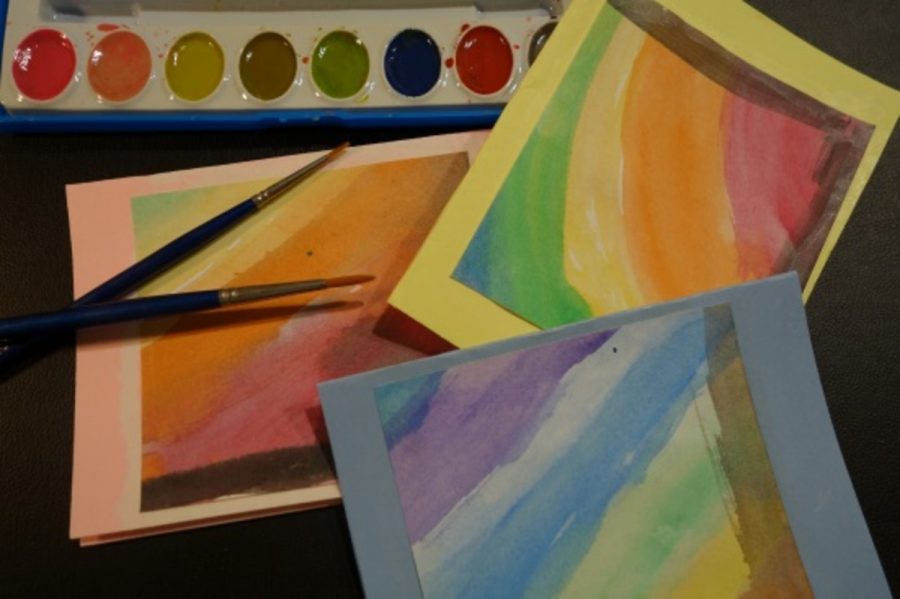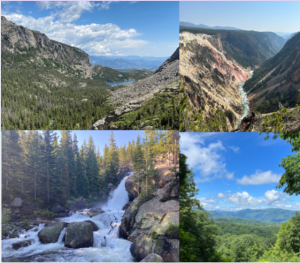Mastering watercolor
Shown here are watercolor cards made by second graders at Blue Ash Elementary. Many easy projects include watercolors. They add soft hues and resemble light as they seem to glow on the paper.
December 4, 2014
Watercolor’s unique look makes this medium a favorite among many artists. It uses water soluble paints to make clear, transparent, and smooth images on white paper.
“I have always liked watercolor paintings. They look so fluid,” freshman Quinn Rile said.
Some people consider watercolor a difficult medium to master because people cannot paint over their mistakes. Yet some basics tips make this an easy way to paint and enjoyable for all ages.
“I remember making a watercolor flower in art class during elementary school. It was one of my favorite projects,” freshman Kate Willis said.
To paint well with watercolors, start first with the right supplies. Look for soft brushes and thick paper sold for watercolor purposes. These can be found mainly in art stores like Michael’s and Plaza.
Thin paper will warp when wet, so before a person starts painting, be sure to take a brush and use water to dampen the entire piece of paper. This expands the paper and preps it to avoid harsh dark paint strokes.
Before applying colors to the paper, plan what hues will go where. Decide what brush strokes can enhance the texture of the piece. Also, ponder what colors to mix to give it the right depth.
“For Foundations of Art, I made a color wheel and it helped me figure out certain tints and shades I wanted to use,” freshman Tha Par said.
Start the piece by using the lighter colors and then slowly layer the darker colors after each coat dries. This helps avoid mistakes since watercolor is relatively light and transparent. It is harder to paint over parts that are not ideal.
Keep in mind not to add too much water because it will wash out previous layers of color and lose the intensity. An option is to use masking fluid, which looks like white glue.
At the beginning of the artwork, apply it to the paper. Then it is possible to paint over it. In the end, peel it or rub it off and that spot will remain white.
Every painting is different, and people can only control the end result to a certain extent. So, use this unique form of art and let the ideas flow through your watercolor.







